 |
 |
Issue N0: 01 |

Trends in Health Care 
From tele-medicine to bio-robots, there are five hot spots to watch where medicine and electronics come together to have the greatest impact on lives, according to chair of the IEEE emerging technology committee. The pace at which medicine and technology are converging is faster than most people realize. Today, point-of-care health technologies like tele-medicine and medical robots performing surgery in hospitals are commonplace. |
iPad 2 Launch: Should You Buy, Wait -- or Sell? 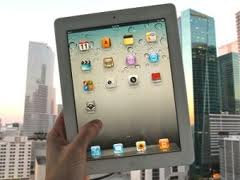
With the arrival of Apple's iPad 2, it's time for some tough decisions. If you already own the first version of the iPad, should you upgrade now or wait until competing tablets--or perhaps even the iPad 3--arrive on the scene? If you decide to buy an iPad 2, what should you do with your old iPad? And if you're a seeking a deal on the first-generation iPad, where are the best places to find one on the cheap.
|
|
Cloud computing 
Cloud computing is a model for enabling ubiquitous, convenient, on-demand network access to a shared pool of configurable computing resources (e.g., networks, servers, storage, applications, and services) that can be rapidly provisioned and released with minimal management effort or service provider interaction. Cloud computing provides computation, software, data access, and storage services that do not require end-user knowledge of the physical location and configuration of the system that delivers the services. |
|
|
SUCCESS MANTRAS
Are you a professional?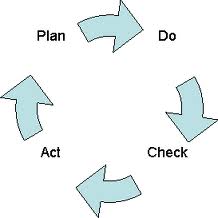
How you look, talk, write, act and work determines whether you are a professional or an amateur. Society does not emphasize the importance of professionalism, so people tend to believe that amateur work is normal. Many businesses accept less-than-good results. |
THE FUTURE OF WEB DESIGN
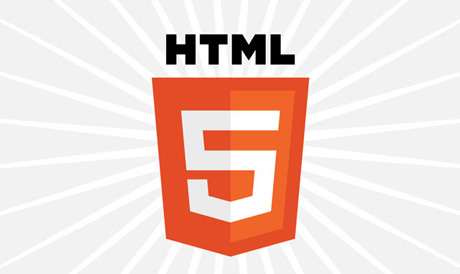
The year is 2011 and we have again found ourselves at dawn of a changing web. Emerging technologies like smart phones and web-enabled tablets have left us unsure of how users are browsing our websites, and new coding standards like HTML5 and CSS3 are turning web design into something more like print design. With all of this change comes massive opportunity for growth, but only for those who are prepared... |
|
|
|
|
Detailed Articles |
|
|
Trends in Health Care 
Apple iPads and other mobile devices have made their way into the exam room, and electronic medical record (EMR) vendors are following suit with compatible applications. “Our goal is to investigate which biological and biomedical engineering technologies are likely to become important within the next decade,” Dhawan said in a university release. “For many people, a healthier tomorrow lies in advancements ranging from biomarkers for early diagnosis and monitoring to neural system engineering.” The following are Dhawan’s five areas where medicine and electronics come together to have the greatest impact on lives: 1. Point of care technologies - Ranging from health monitoring to tele-medicine, all point of health care solutions depend on patients connecting with healthcare professionals via computers. Treating people this way can be beneficial both as a great cost savings but also from a quality standpoint. Nursing engineering is fast becoming a career of the future. So too are health monitoring, e-health, and health care information management for disaster situations. 2. Optical imaging - Optical imaging technologies will find greater use for diagnosing and staging of cancer, cardiovascular diseases and other fibrotic diseases. Current molecular imaging research focuses on the discovery and exploration of naturally existing molecular targets of diseases. It also focuses on novel approaches to exploit differences associated with the molecular targets between normal and diseased states, diagnosis and treatment. 
3. Neuroscience - Fast-emerging technological advances in bioelectronics, bio-nano-sensor technology and neural engineering have created exciting advancements in several areas of neuroscience. Advanced technological developments are critical for addressing the challenges of improving basic knowledge of the nervous system, neurophysiology and neurological disorders and to develop devices to interface with neural tissues. 4. Tissue engineering and regenerative medicine - The advent of stem cell-based therapies has brought regenerative medicine into an increased focus as part of the modern medicine practice. Gene therapy will also play a greater role in this new world. 5. Robots - Patients will see more medical or bio-robots becoming an important part of their care. “These robots will develop novel nano micro and macro devices to assist in diagnosis, surgery, prosthetics, rehabilitation and personal assistance,” said Dhawan. “Clinical, therapeutic and surgical applications of medical robots with advanced instrumentation, sensors, actuators and real-time systems could make a revolutionary impact in medicine and health care.” Article Source |
|
|
iPad 2 Launch: Should You Buy, Wait -- or Sell? 
Buy Now or Wait?The iPad 2, with its slimmer shape, dual cameras, and faster processor, certainly improvea on its predecessor, but its upgrades are more evolutionary than revolutionary. Apple's most rabid supporters will snap up the iPad 2 right away, of course, but is it smarter to wait? As PCWorld's Jared Newman points out, the new Motorola Xoom is one of several tablets that will offer 4G broadband connections later this year, whereas the iPad 2 is stuck at 3G speeds. If you're a speed demon who demands the latest and greatest, the iPad 2 won't cut it. Old iPad: Trash, Stash, or Cash?If you own an iPad but simply must have the iPad 2 right away, what should you do with your old slate? Macworld's Lex Friedman has a variety of helpful suggestions, including the hand-me-down approach: Give your old iPad to a friend, significant other, or third cousin who doesn't crave the latest-and-greatest tech. Alternatively, you could pass it along to a charity or school. Feeling less altruistic? Plenty of places will purchase your first-generation iPad if it's in good condition. Among the leading options are hardware-buying sites such as BuyMyTronics.com and Gazelle. For instance, right now, Gazelle will pay $300 for a mint-condition original 16GB Wi-Fi model iPad with power adapter and original cables. That's a nice chunk of change to help defray the cost of your iPad 2 upgrade. (Don't assume, however, that your appraisal of the hardware's condition will match the reseller's.) 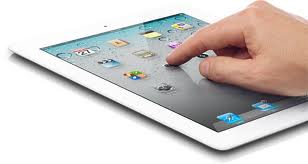
Original iPad Deals: Where to Find ThemThe debut of the iPad 2 means one thing to tech bargain-hunters: clearance prices on the original iPad. Where to shop? The Apple Store has knocked $100 off the price of the first-gen model. Shipping is free, and you'll get the standard iPad one-year warranty plus 90 days of free phone support. Apple's refurbished iPads are even cheaper. Example: $349 for a 16GB Wi-Fi model, or $50 off the reduced list price. Other buying options include Amazon's deals on new, refurbished, or used iPads, and eBay's listing page of Apple slates for sale. Craigslist fans will find plenty of used iPads for sale in their local communities, as well--but as with all Craigslist offerings, buyer beware! Tip: Avoid Craiglisters hawking both used iPads and outcall massage. Something isn't right there. Article Source |
|
|
Cloud computing 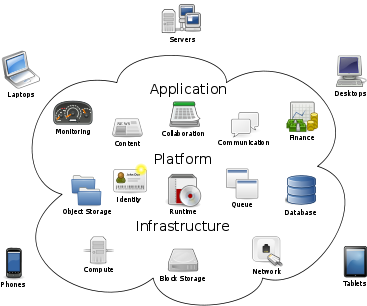
The term "cloud" is used as a metaphor for the Internet, based on the cloud drawing used in the past to represent the telephone network,[21] and later to depict the Internet in computer network diagrams as an abstraction of the underlying infrastructure it represents. Cloud computing is a natural evolution of the widespread adoption of virtualization, service-oriented architecture, autonomic, and utility computing. Details are abstracted from end-users, who no longer have need for expertise in, or control over, the technology infrastructure "in the cloud" that supports them. The actual term "cloud" borrows from telephony in that telecommunications companies, who until the 1990s offered primarily dedicated point-to-point data circuits, began offering Virtual Private Network (VPN) services with comparable quality of service but at a much lower cost. By switching traffic to balance utilization as they saw fit, they were able to utilize their overall network bandwidth more effectively. The cloud symbol was used to denote the demarcation point between that which was the responsibility of the provider and that which was the responsibility of the user. Cloud computing extends this boundary to cover servers as well as the network infrastructure. After the dot-com bubble, Amazon played a key role in the development of cloud computing by modernizing their data centers, which, like most computer networks, were using as little as 10% of their capacity at any one time, just to leave room for occasional spikes. Having found that the new cloud architecture resulted in significant internal efficiency improvements whereby small, fast-moving "two-pizza teams" could add new features faster and more easily, Amazon initiated a new product development effort to provide cloud computing to external customers, and launched Amazon Web Service (AWS) on a utility computing basis in 2006. 
CharacteristicsAgility improves with users' ability to re-provision technological infrastructure resources. |
|
|
SUCCESS MANTRAS 
“Don’t ever do anything as though you were an amateur. “If you have the idea about anything you do that you just dabble in it, you will wind up with a dabble life. There’ll be no satisfaction in it because there will be no real production you can be proud of. “Develop the frame of mind that whatever you do, you are doing it as a professional and move up to professional standards in it. “Never let it be said of you that you lived an amateur life. “Professionals see situations and they handle what they see. They are not amateur dabblers. “So learn this as a first lesson about life. The only successful beings in any field, including living itself, are those who have a professional viewpoint and make themselves and ARE professionals” — L. Ron Hubbard A professional learns every aspect of the job. An amateur skips the learning process whenever possible. A professional carefully discovers what is needed and wanted. An amateur assumes what others need and want. A professional looks, speaks and dresses like a professional. An amateur is sloppy in appearance and speech. A professional keeps his or her work area clean and orderly. An amateur has a messy, confused or dirty work area. A professional is focused and clear-headed. An amateur is confused and distracted. A professional does not let mistakes slide by. An amateur ignores or hides mistakes. A professional jumps into difficult assignments. An amateur tries to get out of difficult work. 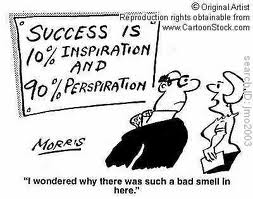
A professional completes projects as soon as possible. An amateur is surrounded by unfinished work piled on top of unfinished work. A professional remains level-headed and optimistic. An amateur gets upset and assumes the worst. A professional handles money and accounts very carefully. An amateur is sloppy with money or accounts. A professional faces up to other people’s upsets and problems. An amateur avoids others’ problems. A professional uses higher emotional tones: Enthusiasm, cheerfulness, interest, contentment. An amateur uses lower emotional tones: anger, hostility, resentment, fear, victim. A professional persists until the objective is achieved. An amateur gives up at the first opportunity. A professional produces a high-quality product or service. An amateur produces a medium-to-low quality product or service. Article Source
|
|
|
THE FUTURE OF WEB DESIGN Just what is the future of web design?
The future of web design is a hot topic right now, with many designers voicing their hopes and wishful thinking; some realistic and some bizarrely out there. Let’s start with a bit of perspective by refreshing our minds to web design in past, old trends and styles. The VerdictThe good the bad and the ugly:Historically the websites that were attractive to look at and easy to use were sparse generally owned by the big companies, the ones who had the money to employ people with design experience to make their websites for them. There was very little community feedback from users in the past compared to today's plethora of blogs and social networking (excluding your treasured guest book entries of course). So average users seemed to focus on making websites mainly for themselves and close friends or family not mass consumption. WHERE WE ARE NOWSocial Networking
Social media is the in thing at the moment, users of the web want interaction and want to voice their opinions. As of the beginning of 2011, Facebook has 500,000,000 users, that's about 1 in every 13 people on earth. Everybody has their use for social media websites, whether it’s keeping in touch with friends, promoting your business, following your favourite celebrities or an array of other uses. Blogging & Content Management
The static website is dying, long live Content Management Systems! Todays web designers start most of their projects by heading to wordpress.org or their CMS of choice’s website to download the latest version of the software that will be the base of their project. Using free blank themes such as: BLANK, Whiteboard and Starkers for Wordpress; designers can start with a clean slate and build their designs around the workings of the CMS. High Quality Templates
Pre-made website templates have always been around, but with the popularity of Content Management Systems today getting a website online is a lot more accessible for average users and this works in advantage of the designer, especially for those designers who make their living building ultra high quality premium templates. The result of this is a veritable smorgasbord of beautiful templates for your blog, CMS or online store just waiting to be installed. Accessibility and Usability
Usability has been a buzz word in the web design industry for a long time now, so long in fact that even clients have cottoned on to it and are telling us which standards we need to meet, and how they should be easy to use and coded semantically; well the latter not so much but I'd definitely be a little better off if I had pound and/or dollar for the amount of times a client has told me to make it "all web two point oh" and "use The HTML 5" Article Source |
|